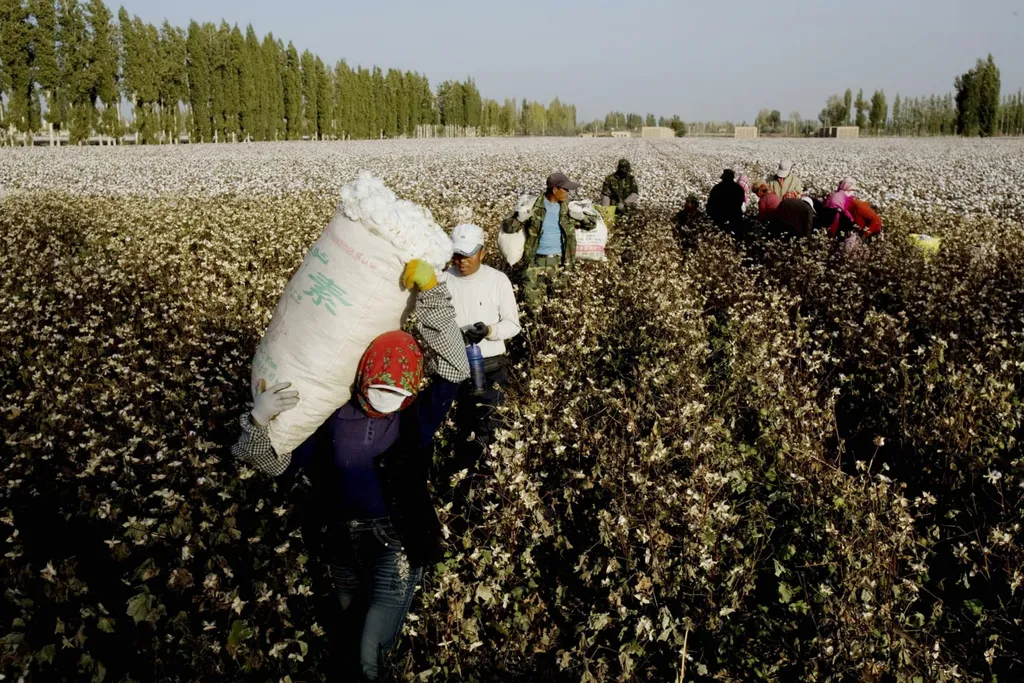In the heart of Xinjiang, China, a critical study is reshaping how farmers approach cotton cultivation, with significant implications for the global agriculture sector. The research, led by Kexin Li from the Engineering Research Center of Plant Growth Regulator at China Agricultural University, delves into the delicate balance between mepiquat chloride (MC) applications and harvest aids, aiming to optimize cotton yield and defoliation in mechanical harvesting systems.
Mepiquat chloride, a widely used plant growth regulator, has long been a staple in cotton farming, helping to manage plant height and promote earlier maturity. However, its interaction with chemical harvest aids—essential for efficient mechanical harvesting—has remained a mystery until now. Li’s study, published in *Industrial Crops and Products*, sheds light on this complex relationship, offering farmers actionable insights to enhance their practices.
The study, conducted over two years, explored the effects of varying MC dosages on cotton plant architecture, maturity, and leaf traits, in conjunction with harvest aids. The findings revealed that MC effectively reduced plant height and accelerated boll opening, particularly in heat-limited conditions. “We found that MC treatments significantly influenced boll maturation and defoliation efficiency,” Li explained. “However, the key was finding the right balance.”
One of the most striking discoveries was the impact of high MC doses on defoliation. While lower doses (480–687 g·ha−1) promoted efficient defoliation and stable yields, higher doses (894 g·ha−1) delayed the process due to thicker palisade tissues. This insight is crucial for farmers aiming to maximize yield while ensuring high-quality machine harvesting.
The commercial implications of this research are substantial. By optimizing MC use, farmers can enhance cotton production efficiency and mechanization, ultimately boosting profitability. “This study provides a roadmap for farmers to tailor their MC applications based on environmental conditions,” Li noted. “It’s about precision agriculture—using the right amount at the right time to achieve the best results.”
As the agriculture sector continues to evolve, the integration of such scientific findings into practical farming techniques will be pivotal. This research not only offers immediate benefits for cotton farmers but also sets the stage for future developments in crop management and mechanization. By understanding the intricate interplay between growth regulators and harvest aids, the industry can move towards more sustainable and efficient practices, ensuring a stable supply of cotton for global markets.
In a rapidly changing agricultural landscape, studies like Li’s are invaluable. They bridge the gap between scientific research and practical application, empowering farmers to make informed decisions that drive productivity and profitability. As the world grapples with the challenges of climate change and resource scarcity, such innovations will be crucial in shaping the future of agriculture.

